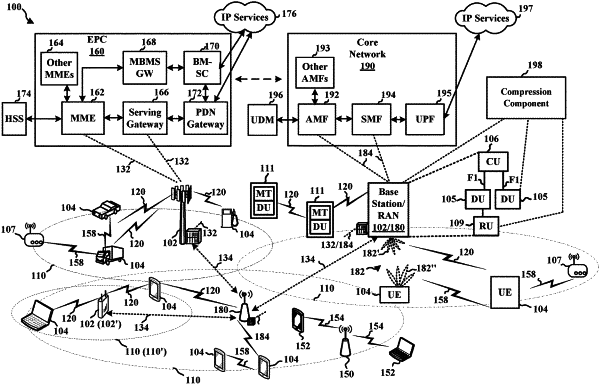| CPC H04B 7/0482 (2013.01) [H04B 7/0478 (2013.01); H04L 5/0048 (2013.01); H04W 28/06 (2013.01); H04W 72/23 (2023.01)] | 30 Claims |

|
1. An apparatus for wireless communication at a first network entity, comprising:
a memory; and
at least one processor coupled to the memory and configured to:
receive, from a user equipment (UE), uplink data via one or more active tones of a plurality of tones in a symbol, the uplink data corresponding to an access vector;
compress the uplink data based on a linear transformation of a pseudo-access vector generated based on the access vector, the linear transformation including a matrix, the compression enabling a second network entity to decompress the compressed uplink data without knowing one or more locations associated with the one or more active tones; and
transmit, to the second network entity, the compressed uplink data.
|